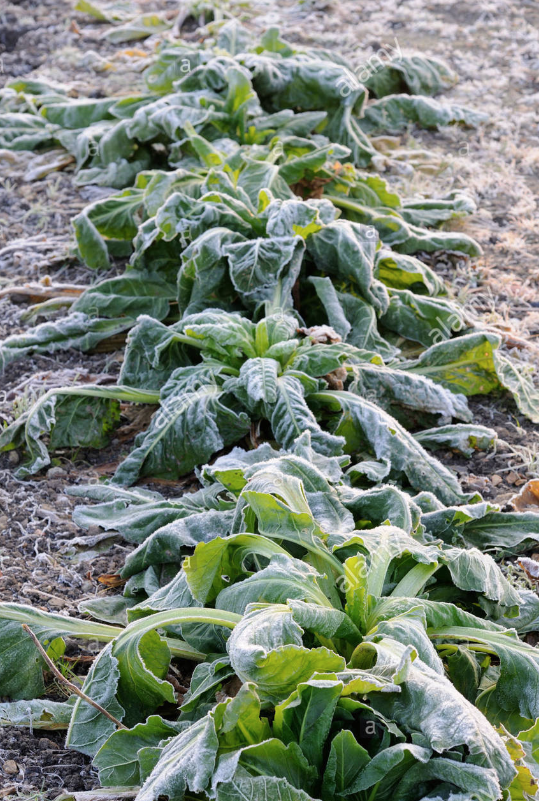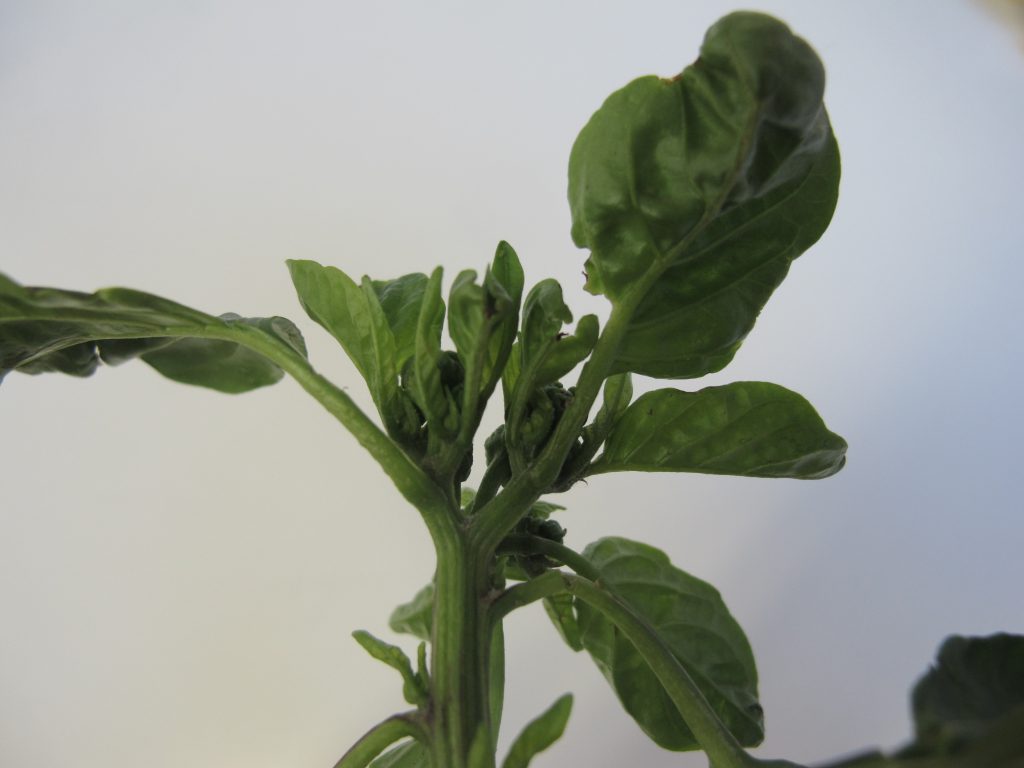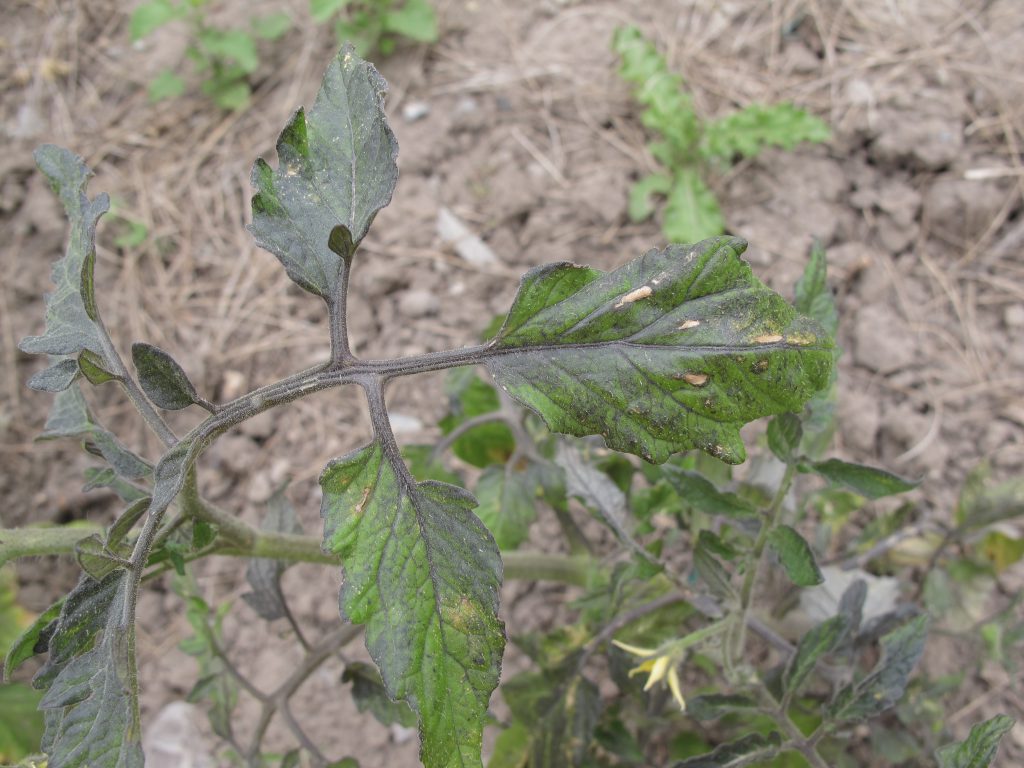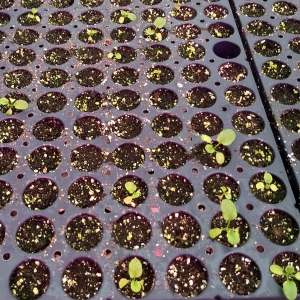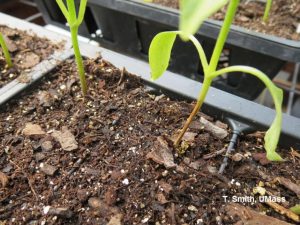In this issue:
- Frost
- Onion Maggots
- Damping-Off
FROST
Overview
Timing is critical when deciding to plant your gardens or fields. Low temperatures and frost damage can reduce a plant’s growth and rate of metabolism. A vegetable crop’s hardiness will depend on its variety and genetics.
Damage
Damage to vegetables occurs when the water in and between the cells freezes and expands causing them to burst. This can cause the plant to appear dark green or water-soaked before turning dark and necrotic. Some vegetables such as collards, kale, lettuce, onions, potatoes, spinach, and turnips are most frost hardy as their leaves and roots are more capable to withstand the internal ice-formations. Vegetables that are less susceptible include cucumbers, eggplants, peppers, squashes, sweet corn, and tomatoes.
Management
- Have an understanding of your specific “Plant Hardiness Zone”
(Search your zip code on the Utah Plant Hardiness Zone Map) - Start vegetable seedlings indoors, then transplant outdoors when frost risk ends. (Refer to the Wasatch Front Vegetable Planting Chart)
- Use floating row covers or other protective covers to protect sensitive crops from frost.
| Location | Last Average Frost Day |
| Alpine | May 14 |
| Blanding | May 12 |
| Brigham City | May 10 |
| Cedar City | May 11 |
| Delta | May 18 |
| Draper | June 6 |
| Farmington | May 5 |
| Fillmore | May 16 |
| Heber | June 11 |
| Kanab | May 8 |
| Layton | May 14 |
| Lehi | June 14 |
| Laketown | June 14 |
| Logan (KVNU Radio) | May 15 |
| Morgan | June 6 |
| Moab | April 18 |
| Moroni | June 2 |
| Murray | May 8 |
| Ogden (Airport) | April 28 |
| Park City | June 7 |
| Pleasant Grove | May 7 |
| Price | May 1 |
| Provo (BYU) | April 29 |
| Roosevelt | May 18 |
| Salt Lake City (Airport) | April 23 |
| Spanish Fork | May 1 |
| St. George | April 2 |
| Tooele | May 7 |
| Tremonton | May 5 |
Data from Utah Climate Center. (Click here to view more locations and specific elevations.)
Additional Resources
Effects of Cold Weather on Horticultural Plants (Purdue University Extension)
Freeze Damage in Fall Vegetables: Identifying and Preventing (Michigan State University Extension)
ONION MAGGOTS (Delia antiqua)
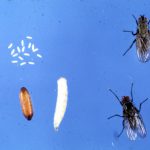
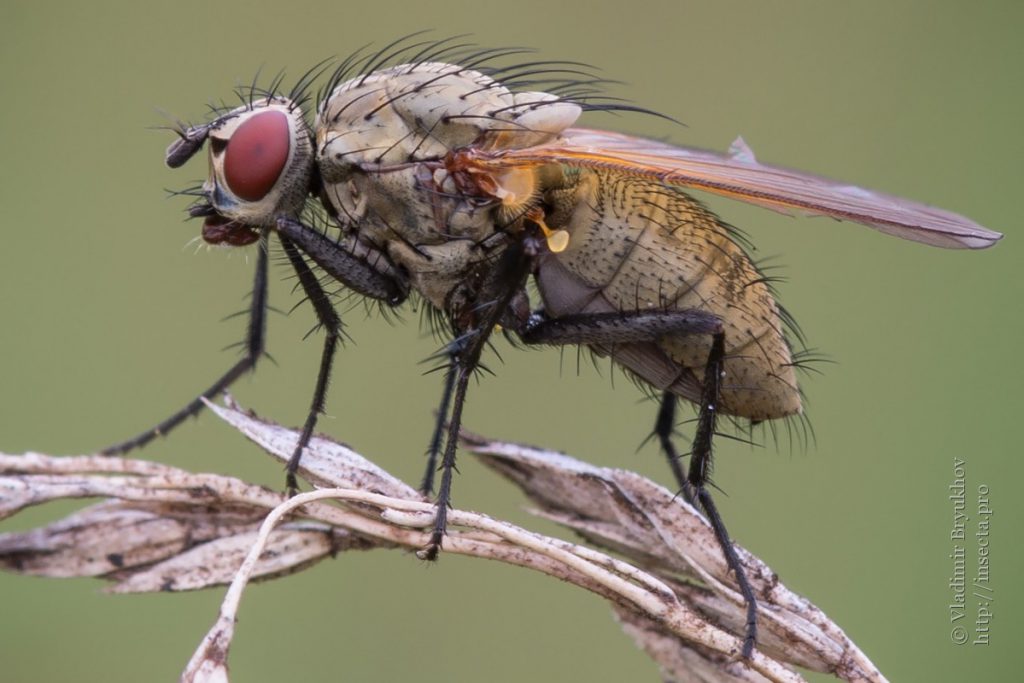
Overview
Adult onion maggot flies emerge from their overwintering sites in late April through May. They can go through one generation in about 3-4 weeks, totaling 2-3 generations per year.
Damage
The first generation is usually the most damaging as the larvae will feed on the roots and bulbs of the young onion. This ultimately causes wilting and plant death. A single larva can kill multiple onion seedlings during its growth and development. Later generations tend to be less severe, but the feeding can leave the bulb prone to rotting diseases and reduced quality and storability.
Management
- Begin monitoring for populations by setting up yellow sticky cards in mid-May. (First generation usually has peak flights at the end of May)
- Dispose of cull onions and onion debris by dumping or composting then covering with at least 12 inches of onion-free soil.
- Remove and destroy volunteer onions in the spring.
- Remove onion culls and debris from fields after harvest then till in the fall.
- Rotate onion crops every season with unrelated crops.
- Delay planting where onion maggots have been a problem in seasons prior.
- Consider implementing an in-furrow application of granular or liquid insecticide. Plant seeds treated with systemic insecticides.
- Click Here to view registered commercial insecticides for onion maggots.
- Click Here to view registered home insecticides for onion maggots.
Additional Resources
Oregon Dept. of Ag Onion Maggot Control Guidelines
Idaho Dept. of Ag Onion Maggot Control Guidelines
Onion Maggot – PNW Pest Management Handbook
Onion Maggot – Utah Vegetable Production & Pest Management Guide
DAMPING-OFF
Overview
Damping-off is a fungal disease caused by various soil pathogens such as Pythium, Rhizoctonia, Fusarium, and Phytophthora. It is most common in cold + wet soil that has poor drainage. Damping-off can occur both in the field and in the greenhouse. Damping-off is more likely to be present in unsanitary spaces, such as greenhouses with dirty benches or unsterile containers and equipment.
Damage
Symptoms of damping-off include mushy seeds that darken and decay, shriveled seedlings, or seedlings with weakened stems that topple over due to rotting.
Management
- Sanitation is the most effective control strategy to manage damping-off. Ensure your greenhouse, growing area, and supplies are disinfected. Use new trays and pots every season. Make sure the sourced growing media is sterile and pathogen free.
- If an infection is identified, seedlings should be disposed of immediately along with potentially infected seedlings nearby.
- Use clean water when irrigating.
- Consider purchasing pre-treated seed with fungicides that can reduce damping-off incidence.
Additional Resources
USU Fact Sheet: Damping-Off
Sanitation for Disease and Pest Management in Greenhouses (Purdue Extension)
How to prevent seedling damping off (Minnesota Extension)

